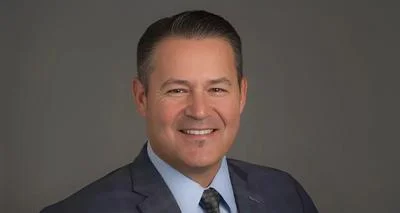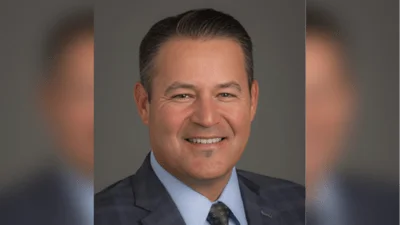Dr. James C. Schmidt Chancellor | Official website
Dr. James C. Schmidt Chancellor | Official website
An effort that began seven years ago in a University of Wisconsin-Eau Claire history class culminated this spring when Eau Claire’s oldest railroad bridge was added to the State Register of Historic Places.
The Wisconsin Historical Society named the 143-year-old High Bridge to the state register in May after determining it significant to Wisconsin’s heritage. With state approval, an application has been sent to the National Park Service for consideration for inclusion in the National Register of Historic Places.
“I think this is service-learning in the truest sense,” said Dr. John Mann, professor of history and director of the university’s public history program. “In this case, students learned about preservation, they applied what they learned and they directly benefited the community by helping the city comply with federal preservation laws.”
The 900-foot-long High Bridge spans the Chippewa River just downriver from Dell’s Dam and is officially named the Chicago, St. Paul, Minneapolis and Omaha Railway Bridge. Locally referred to as the High Bridge due to its deck being approximately 80 feet above normal river level, it was built for rail traffic in 1881. The structure was abandoned in 1992, converted into a scenic pedestrian bridge along the Chippewa River State Trail in 2015, and recognized as a local landmark by the city of Eau Claire Landmark Commission a year later.
In 2017, Mann served on the Landmark Commission and knew city officials were interested in nominating Eau Claire structures to the National Register of Historic Places. Students in Mann’s public history seminar class conduct archival research on topics related to history interpretation for community partners during their spring semester classes. That year, one group researched the High Bridge under historic transportation in the Chippewa Valley.
The class critiqued their findings and created an application draft for submission to the state historic register. The draft was reviewed, revised, and submitted by Megan Beer-Pemberton, a historian with Wisconsin engineering firm CORRE Inc., who received her bachelor’s degree in history and master’s degree in public history from UW-Eau Claire.
Beer-Pemberton noted that collaboration among students, faculty, and alumni can work effectively in real-life scenarios. “Though a student may graduate from an institution such as UWEC, you never really stop being a ‘student’,” she said. “It’s a great example of how alumni can help current students with their coursework and provide guidance for workforce post-graduation.”
The historic designation application faced delays after storm damage occurred to a bridge railing in June 2021. Inspectors found significant cracking and settling of limestone piers which led to closure of the structure. After $3.4 million repairs to multiple bridge piers, it reopened to pedestrians in March 2022.
Beer-Pemberton mentioned that Eau Claire city officials supported historic designation efforts by providing engineering information from repairs so updates could be made for consideration by the State Historical Society.
The bridge rehabilitation received two awards in 2023: The Wisconsin Historical Society Historic Preservation Award and American Public Works Association Wisconsin chapter award for Small Cities/Rural Communities Project of the Year.
This marks the second project from UW-Eau Claire's spring 2017 class named to the State Register of Historic Places; previously, Banbury Place's Soo Line Railroad Bridge (locally known as S-Bridge) achieved both state and national register status in 2022.
Rachel Lange, curator at Chippewa Valley Museum who participated as a student researching S-Bridge's history during her undergraduate studies at UW-Eau Claire commented on seeing both bridges listed on registers: “A lot of time and effort went into these projects… knowing they actually did [get listed] has been incredibly cool.”
Lange emphasized how valuable her experience was through Mann's seminar class which taught approaching projects comprehensively rather than focusing solely on events or people—a skill she uses daily professionally today.
---





 Alerts Sign-up
Alerts Sign-up